Carpenter Ants on:
[Wikipedia]
[Google]
[Amazon]
Carpenter ants (''Camponotus'' spp.) are a genus of large
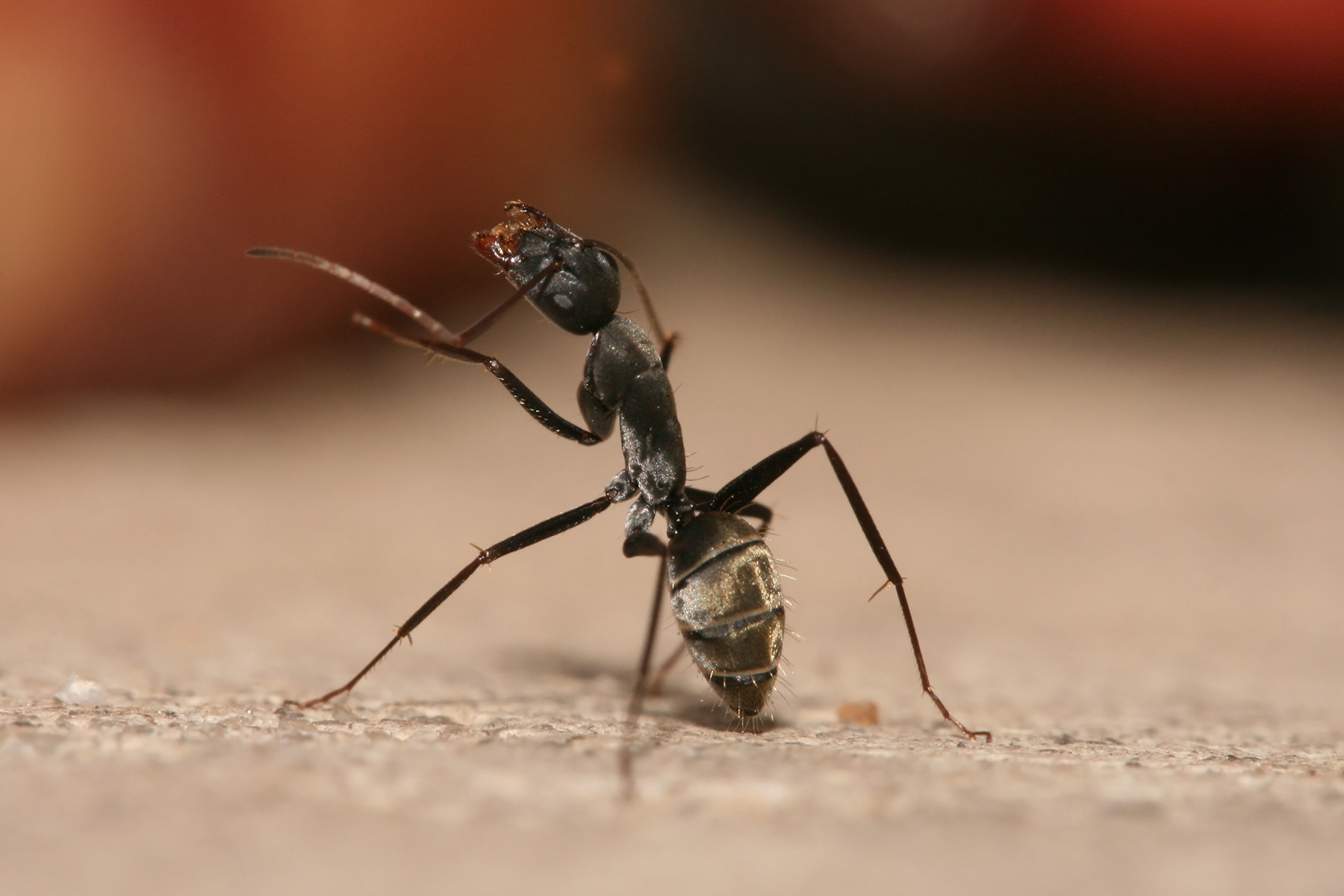 Carpenter ant species reside both outdoors and indoors in moist, decaying, or hollow wood, most commonly in forest environments. They cut "galleries" into the wood grain to provide passageways to allow for movement between different sections of the nest. Certain parts of a house, such as around and under windows, roof eaves, decks and porches, are more likely to be infested by carpenter ants because these areas are most vulnerable to moisture.
Carpenter ant species reside both outdoors and indoors in moist, decaying, or hollow wood, most commonly in forest environments. They cut "galleries" into the wood grain to provide passageways to allow for movement between different sections of the nest. Certain parts of a house, such as around and under windows, roof eaves, decks and porches, are more likely to be infested by carpenter ants because these areas are most vulnerable to moisture.
 Carpenter ants have been known to construct extensive underground tunneling systems. These systems often end at some food source – often aphid colonies, where the ants extract and feed on honeydew. These tunneling systems also often exist in trees. The colonies typically include a central "parent" colony surrounded and supplemented by smaller satellite colonies.Colony Size and Polygyny in Carpenter Ants (Hymenoptera: Formicidae) Roger D. Akre, Laurel D. Hansen and Elizabeth A. Myhre Journal of the Kansas Entomological Society , Vol. 67, No. 1 (January 1994), pp. 1–9
Carpenter ants have been known to construct extensive underground tunneling systems. These systems often end at some food source – often aphid colonies, where the ants extract and feed on honeydew. These tunneling systems also often exist in trees. The colonies typically include a central "parent" colony surrounded and supplemented by smaller satellite colonies.Colony Size and Polygyny in Carpenter Ants (Hymenoptera: Formicidae) Roger D. Akre, Laurel D. Hansen and Elizabeth A. Myhre Journal of the Kansas Entomological Society , Vol. 67, No. 1 (January 1994), pp. 1–9
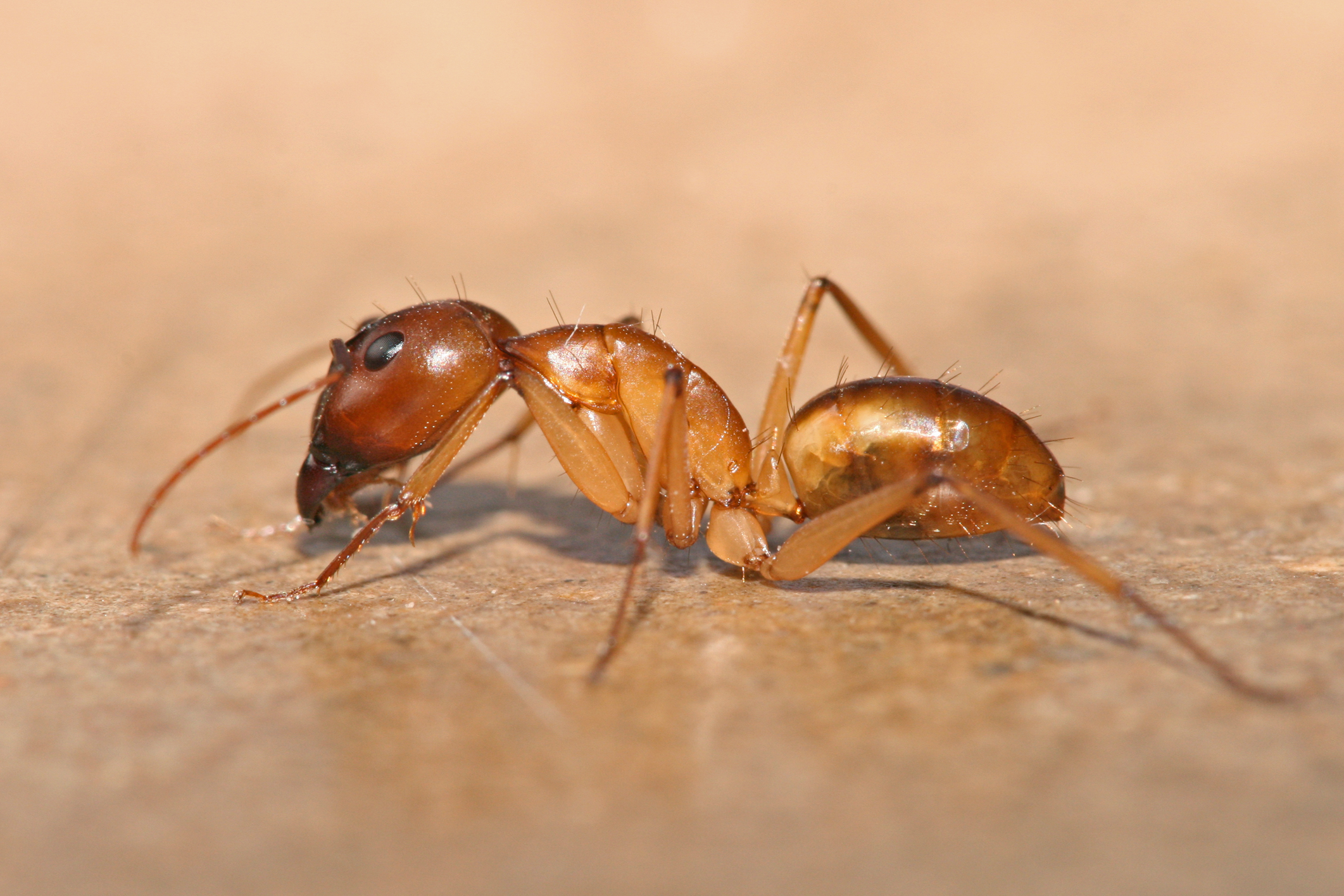 Carpenter ants are considered both predators and scavengers. These ants are foragers that typically eat parts of other dead insects or substances derived from other insects. Common foods for them include insect parts, " honeydew" produced by
Carpenter ants are considered both predators and scavengers. These ants are foragers that typically eat parts of other dead insects or substances derived from other insects. Common foods for them include insect parts, " honeydew" produced by
 Carpenter ants work to build the nests that house eggs in environments with usually high humidity due to their sensitivity to environmental humidity. These nests are called primary nests. Satellite nests are constructed once the primary nest is established and has begun to mature. Residents of satellite nests include older
Carpenter ants work to build the nests that house eggs in environments with usually high humidity due to their sensitivity to environmental humidity. These nests are called primary nests. Satellite nests are constructed once the primary nest is established and has begun to mature. Residents of satellite nests include older
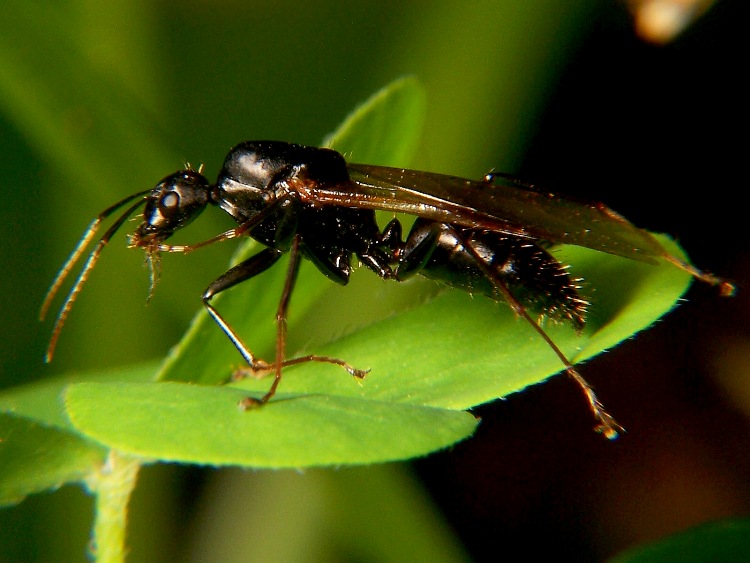
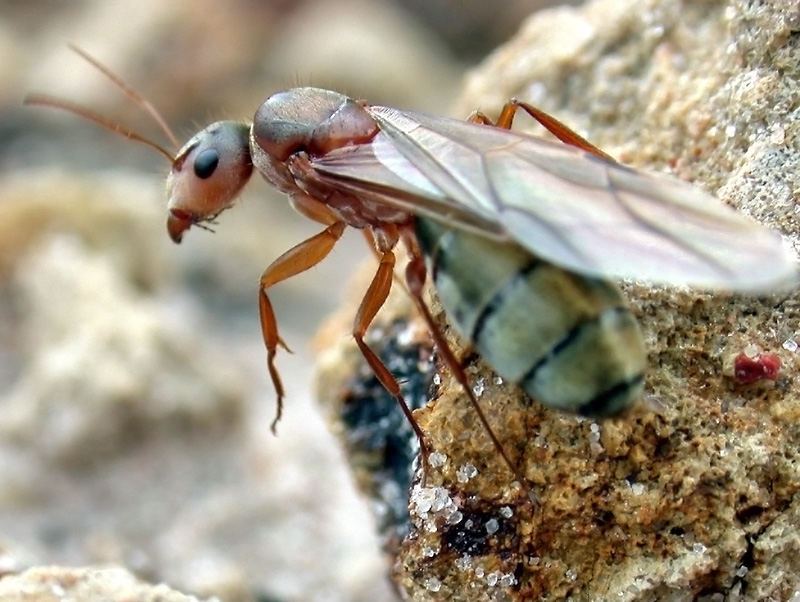


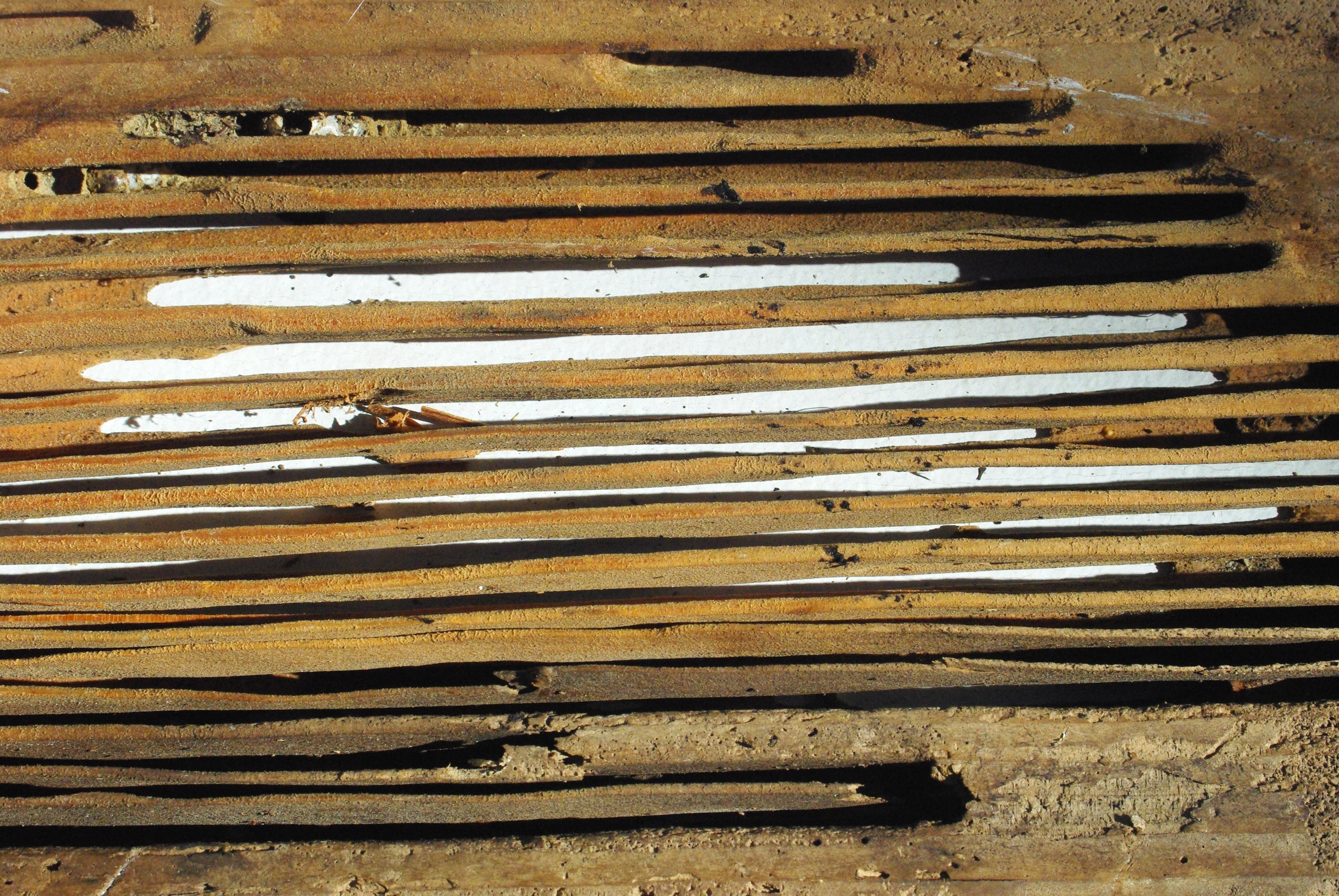
PDF
€”original description of p. 35 * (2007): A Key to ''Camponotus'' Mayr of Australia. In: Snelling, R.R., B.L. Fisher and P.S. Ward (eds). Advances in ant systematics (Hymenoptera: Formicidae): homage to E. O. Wilson – 50 years of contributions. ''Memoirs of the American Entomological Institute'' 80
PDF
— 91 species, 10 subspecies
Carpenter Ant Information
Ohio State University Extension Fact Sheet
Carpenter Ant Fact Sheet
from the National Pest Management Association with information on habits, habitat and prevention
Carpenter Ants
An online supplemental to "Carpenter Ants: Biology and Control" by Laurel Hansen, Ph.D. of Spokane Falls Community College
Carpenter Ants With Wings in House: Everything You Need to Know
{{Taxonbar, from=Q157875 Ant genera Taxa named by Gustav Mayr 1861
ant
Ants are Eusociality, eusocial insects of the Family (biology), family Formicidae and, along with the related wasps and bees, belong to the Taxonomy (biology), order Hymenoptera. Ants evolved from Vespoidea, vespoid wasp ancestors in the Cre ...
s (workers ) indigenous to many parts of the world.
True carpenter ants build nests inside wood, consisting of galleries chewed out with their mandibles or jaws, preferably in dead, damp wood. However, unlike termite
Termites are a group of detritivore, detritophagous Eusociality, eusocial cockroaches which consume a variety of Detritus, decaying plant material, generally in the form of wood, Plant litter, leaf litter, and Humus, soil humus. They are dist ...
s, they do not consume wood, but instead discard a material that resembles sawdust outside their nest. Sometimes, carpenter ants hollow out sections of trees. They also commonly infest wooden buildings and structures, causing a widespread problem: they are a major cause of structural damage. Nevertheless, their ability to excavate wood helps in forest decomposition. The genus includes over 1,000 species. They also farm aphid
Aphids are small sap-sucking insects in the Taxonomic rank, family Aphididae. Common names include greenfly and blackfly, although individuals within a species can vary widely in color. The group includes the fluffy white Eriosomatinae, woolly ...
s. In their farming, the ants protect the aphids from predators (usually other insects) while they excrete a sugary fluid called honeydew, which the ants get by stroking the aphids with their antennae.
Description
Carpenter ants are generally large ants: workers are usually 4–7 mm long in small species and 7–13 mm in large species, queens are 9–20 mm long and males are 5–13 mm long. The bases of the antennae are separated from the clypeal border by a distance of at least the antennal scape's maximum diameter. The mesosoma in profile usually forms a continuous curve from the pronotum through to the propodeum.Habitat
 Carpenter ant species reside both outdoors and indoors in moist, decaying, or hollow wood, most commonly in forest environments. They cut "galleries" into the wood grain to provide passageways to allow for movement between different sections of the nest. Certain parts of a house, such as around and under windows, roof eaves, decks and porches, are more likely to be infested by carpenter ants because these areas are most vulnerable to moisture.
Carpenter ant species reside both outdoors and indoors in moist, decaying, or hollow wood, most commonly in forest environments. They cut "galleries" into the wood grain to provide passageways to allow for movement between different sections of the nest. Certain parts of a house, such as around and under windows, roof eaves, decks and porches, are more likely to be infested by carpenter ants because these areas are most vulnerable to moisture.
 Carpenter ants have been known to construct extensive underground tunneling systems. These systems often end at some food source – often aphid colonies, where the ants extract and feed on honeydew. These tunneling systems also often exist in trees. The colonies typically include a central "parent" colony surrounded and supplemented by smaller satellite colonies.Colony Size and Polygyny in Carpenter Ants (Hymenoptera: Formicidae) Roger D. Akre, Laurel D. Hansen and Elizabeth A. Myhre Journal of the Kansas Entomological Society , Vol. 67, No. 1 (January 1994), pp. 1–9
Carpenter ants have been known to construct extensive underground tunneling systems. These systems often end at some food source – often aphid colonies, where the ants extract and feed on honeydew. These tunneling systems also often exist in trees. The colonies typically include a central "parent" colony surrounded and supplemented by smaller satellite colonies.Colony Size and Polygyny in Carpenter Ants (Hymenoptera: Formicidae) Roger D. Akre, Laurel D. Hansen and Elizabeth A. Myhre Journal of the Kansas Entomological Society , Vol. 67, No. 1 (January 1994), pp. 1–9
Food
 Carpenter ants are considered both predators and scavengers. These ants are foragers that typically eat parts of other dead insects or substances derived from other insects. Common foods for them include insect parts, " honeydew" produced by
Carpenter ants are considered both predators and scavengers. These ants are foragers that typically eat parts of other dead insects or substances derived from other insects. Common foods for them include insect parts, " honeydew" produced by aphid
Aphids are small sap-sucking insects in the Taxonomic rank, family Aphididae. Common names include greenfly and blackfly, although individuals within a species can vary widely in color. The group includes the fluffy white Eriosomatinae, woolly ...
s, and extrafloral nectar from plants. They are also known for eating other sugary liquids such as honey, syrup, or juices. Carpenter ants can increase the survivability of aphids when they tend them.
Most species of carpenter ants forage at night. When foraging, they usually collect and consume dead insects. Some species less commonly collect live insects. When they discover a dead insect, workers surround it and extract its body fluids to be carried back to the nest. The remaining chitin
Chitin (carbon, C8hydrogen, H13oxygen, O5nitrogen, N)n ( ) is a long-chain polymer of N-Acetylglucosamine, ''N''-acetylglucosamine, an amide derivative of glucose. Chitin is the second most abundant polysaccharide in nature (behind only cell ...
-based shell is left behind. Occasionally, the ants bring the chitinous head of the insect back to the nest, where they also extract its inner tissue. The ants can forage individually or in small or large groups, though they often opt to do so individually. Different colonies in close proximity may have overlapping foraging regions, although they typically do not assist each other in foraging. Their main food sources normally include proteins
Proteins are large biomolecules and macromolecules that comprise one or more long chains of amino acid residues. Proteins perform a vast array of functions within organisms, including catalysing metabolic reactions, DNA replication, re ...
and carbohydrates
A carbohydrate () is a biomolecule composed of carbon (C), hydrogen (H), and oxygen (O) atoms. The typical hydrogen-to-oxygen atomic ratio is 2:1, analogous to that of water, and is represented by the empirical formula (where ''m'' and ''n'' ma ...
.
Instances of carpenter ants bleeding Chinese elm trees for the sap have been observed in northern Arizona. These instances may be rare, as the colonies vastly exceeded the typical size of carpenter ant colonies elsewhere.
When workers find food sources, they communicate this information to the rest of the nest. They use biochemical pheromones to mark the shortest path that can be taken from the nest to the source. When a sizable number of workers follows this trail, the strength of the cue increases and a foraging trail is established. This ends when the food source is depleted. The workers will then feed the queen and the larvae by consuming the food they have found, and regurgitating the food at the nest. Foraging trails can be either under or above ground.
Although carpenter ants do not tend to be extremely aggressive, they have developed mechanisms to maximize what they take from a food source when that same food source is also visited by competing organisms. This is accomplished in different ways. Sometimes they colonize an area near a relatively static food supply. More often, they develop a systemic way to visit the food source, with alternating trips by different individual ants or groups. This allows them to decrease the gains of intruders because the intruders tend to visit in a scattered, random, and unorganized manner. The ants, however, visit the sources systematically so that they reduce the average crop remaining. They tend to visit more resource-dense food areas in an attempt to minimize resource availability for others. That is, the more systematic the foraging behavior of the ants, the more random that of its competitors.
Contrary to popular belief, carpenter ants do not actually eat wood, as they are unable to digest cellulose
Cellulose is an organic compound with the chemical formula, formula , a polysaccharide consisting of a linear chain of several hundred to many thousands of glycosidic bond, β(1→4) linked glucose, D-glucose units. Cellulose is an important s ...
. They only create tunnels and nests within it.
Some carpenter ant species can obtain nitrogen by feeding on urine
Urine is a liquid by-product of metabolism in humans and many other animals. In placental mammals, urine flows from the Kidney (vertebrates), kidneys through the ureters to the urinary bladder and exits the urethra through the penile meatus (mal ...
or urine-stained sand. This may be beneficial in nitrogen-limited environments.
Symbionts
All ants in this genus, and some related genera, possess anobligate
{{wiktionary, obligate
As an adjective, obligate means "by necessity" (antonym '' facultative'') and is used mainly in biology in phrases such as:
* Obligate aerobe, an organism that cannot survive without oxygen
* Obligate anaerobe, an organism ...
bacteria
Bacteria (; : bacterium) are ubiquitous, mostly free-living organisms often consisting of one Cell (biology), biological cell. They constitute a large domain (biology), domain of Prokaryote, prokaryotic microorganisms. Typically a few micr ...
l endosymbiont
An endosymbiont or endobiont is an organism that lives within the body or cells of another organism. Typically the two organisms are in a mutualism (biology), mutualistic relationship. Examples are nitrogen-fixing bacteria (called rhizobia), whi ...
called ''Blochmannia
''Blochmannia'' is a genus
Genus (; : genera ) is a taxonomic rank above species and below family (taxonomy), family as used in the biological classification of extant taxon, living and fossil organisms as well as Virus classification#ICTV c ...
''. This bacterium has a small genome, and retains genes to biosynthesize essential amino acid
Amino acids are organic compounds that contain both amino and carboxylic acid functional groups. Although over 500 amino acids exist in nature, by far the most important are the 22 α-amino acids incorporated into proteins. Only these 22 a ...
s and other nutrients. This suggests the bacterium plays a role in ant nutrition. Many ''Camponotus'' species are also infected with '' Wolbachia'', another endosymbiont that is widespread across insect groups. ''Wolbachia'' is associated with the nurse cells in the queen's ovaries in the species '' Camponotus textor'', which results in the worker larva being infected.
Behavior and ecology
Nesting
 Carpenter ants work to build the nests that house eggs in environments with usually high humidity due to their sensitivity to environmental humidity. These nests are called primary nests. Satellite nests are constructed once the primary nest is established and has begun to mature. Residents of satellite nests include older
Carpenter ants work to build the nests that house eggs in environments with usually high humidity due to their sensitivity to environmental humidity. These nests are called primary nests. Satellite nests are constructed once the primary nest is established and has begun to mature. Residents of satellite nests include older larvae
A larva (; : larvae ) is a distinct juvenile form many animals undergo before metamorphosis into their next life stage. Animals with indirect developmental biology, development such as insects, some arachnids, amphibians, or cnidarians typical ...
, pupae, and some winged individuals, such as male ants (drones), or future queen ants. Only eggs, the newly hatched larvae
A larva (; : larvae ) is a distinct juvenile form many animals undergo before metamorphosis into their next life stage. Animals with indirect developmental biology, development such as insects, some arachnids, amphibians, or cnidarians typical ...
, workers, and the queen reside in the primary nests. As satellite nests do not have environmentally sensitive eggs, the ants can construct them in rather diverse locations that can actually be relatively dry. Some species, like '' Camponotus vagus'', build the nest in a dry place, usually in wood.
Nuptial flight
When conditions are warm and humid, winged males and females participate in a nuptial flight. They emerge from their satellite nests and females mate with a number of males while in flight. The males die after mating. These newly fertilized queens discard their wings and search for new areas to establish primary nests. The queens build new nests and deposit around 20 eggs, nurturing them as they grow until worker ants emerge. The worker ants eventually assist her in caring for the brood as she lays more eggs. After a few years, reproductive winged ants are born, allowing for the making of new colonies. Again, satellite nests will be established and the process will repeat itself.Pararas — Carayannis, Carolyn. "Carpenter Ants". Colony Behaviors of Carpenter Ants. Web. October 1, 2013.Relatedness
Relatedness is the probability that a gene in one individual is an identical copy, by descent, of a gene in another individual. It is essentially a measure of how closely related two individuals are with respect to a gene. It is quantified by the coefficient of relatedness, which is a number between zero and one. The larger the value, the more two individuals are "related". Carpenter ants are social hymenopteran insects. This means the relatedness between offspring and parents is disproportionate. Females are more closely related to their sisters than they are to their offspring. Between full sisters, the coefficient of relatedness is ''r'' > 0.75 (due to their haplodiploid genetic system). Between parent and offspring, the coefficient of relatedness is ''r'' = 0.5, because, given the event in meiosis, a certain gene has a 50% chance of being passed on to the offspring.Genetic diversity
Eusocial insects tend to present lowgenetic diversity
Genetic diversity is the total number of genetic characteristics in the genetic makeup of a species. It ranges widely, from the number of species to differences within species, and can be correlated to the span of survival for a species. It is d ...
within colonies, which can increase with the co-occurrence of multiple queens ( polygyny) or with multiple mating by a single queen (polyandry
Polyandry (; ) is a form of polygamy in which a woman takes two or more husbands at the same time. Polyandry is contrasted with polygyny, involving one male and two or more females. If a marriage involves a plural number of "husbands and wives ...
). Distinct reproductive strategies may generate similar patterns of genetic diversity in ants.
Kin recognition
According to Hamilton's rule for relatedness, for relative-specific interactions to occur, such as kinaltruism
Altruism is the concern for the well-being of others, independently of personal benefit or reciprocity.
The word ''altruism'' was popularised (and possibly coined) by the French philosopher Auguste Comte in French, as , for an antonym of egoi ...
, a high level of relatedness is necessary between two individuals. Carpenter ants, like many social insect species, have mechanisms by which individuals determine whether others are nestmates or not. They are useful because they explain the presence or absence of altruistic behavior between individuals. They also act as evolutionary strategies to help prevent incest and promote kin selection. Social carpenter ants recognize their kin in many ways. These methods of recognition are largely chemical in nature, and include environmental odors, pheromones, "transferable labels", and labels from the queen that are distributed to and among nest members. Because they have a chemical basis for emission and recognition, odors are useful because many ants can detect such changes in their environment through their antennae.
The process of recognition for carpenter ants requires two events. First, a cue must be present on a "donor animal". These cues are called "labels". Next, the receiving animal must be able to recognize and process the cue. In order for an individual carpenter ant to be recognized as a nestmate, it must, as an adult, go through specific interactions with older members of the nest. This process is also necessary in order for the ant to recognize and distinguish other individuals. If these interactions do not occur in the beginning of adult life, the ant will be unable to be distinguished as a nestmate and unable to distinguish nestmates.
Kin altruism
Recognition allows for the presence of kin-specific interactions, such as kin altruism. Altruistic individuals increase other individuals' fitness at the expense of their own. Carpenter ants perform altruistic actions toward their nestmates so that their shared genes are propagated more readily or more often. In many social insect species like these ants, many worker animals are sterile and do not have the ability to reproduce. As a result, they forgo reproduction to donate energy and help the fertile individuals reproduce.Pheromones
As in most other social insect species, individual interaction is heavily influenced by the queen. The queen can influence individuals with odors called pheromones, which can have different effects. Some pheromones have been known to calm workers, while others have been known to excite them. Pheromonal cues from ovipositing queens have a stronger effect on worker ants than those of virgin queens.Social immunity
In many social insect species, social behavior can increase the disease resistance of animals. This phenomenon, called social immunity, exists in carpenter ants. It is mediated through the feeding of other individuals by regurgitation. The regurgitate can have antimicrobial activity, which would be spread amongst members of the colony. Some proteases with antimicrobial activity have been found to exist in regurgitated material. Communal sharing of immune response capability is likely to play a large role in colonial maintenance during highly pathogenic periods.Polygyny
Polygyny often is associated with many social insect species, and usually is characterized by limited mating flights, small queen size, and other characteristics. However, carpenter ants have "extensive" mating flights and relatively large queens, distinguishing them from polygynous species. Carpenter ants are described as oligogynous because they have a number of fertile queens which are intolerant of each other and must therefore spread to different areas of the nest. Some aggressive interactions have been known to take place between queens, but not necessarily through workers. Queens become aggressive mainly to other queens if they trespass on a marked territory. Queens in a given colony can work together in brood care and the workers tend to experience higher rates of survival in colonies with multiple queens. Some researchers still subscribe to the notion that carpenter ant colonies are only monogynous.Exploding ants
In at least nineSoutheast Asia
Southeast Asia is the geographical United Nations geoscheme for Asia#South-eastern Asia, southeastern region of Asia, consisting of the regions that are situated south of China, east of the Indian subcontinent, and northwest of the Mainland Au ...
n species of the ''cylindricus'' complex, including '' Colobopsis saundersi'', workers feature greatly enlarged mandibular glands that run the entire length of the ant's body. They can release their contents suicidally by performing autothysis, thereby rupturing the ant's body and spraying a toxic substance from the head, which gives these species the common name "exploding ants". The enlarged mandibular gland, which is many times the size of that of a normal ant, produces a glue. The glue bursts out and entangles and immobilizes all nearby victims. However, all exploding ant species have been moved to '' Colobopsis'' based on recent taxonomy.
The termite species '' Globitermes sulphureus'' has a similar defensive system.
Subgenera
''Camponotus'' currently has 43 subgenera. *'' Camponotus'' Mayr, 1861 *'' Dendromyrmex'' Emery, 1895 *'' Forelophilus'' Kutter, 1931 *'' Hypercolobopsis'' Emery, 1920 *'' Karavaievia'' Emery, 1925 *'' Manniella'' Wheeler, W.M., 1921 *'' Mayria'' Forel, 1878 *'' Myrmacrhaphe'' Santschi, 1926 *'' Myrmamblys'' Forel, 1912 *'' Myrmaphaenus'' Emery, 1920 *'' Myrmentoma'' Forel, 1912 *'' Myrmepomis'' Forel, 1912 *'' Myrmespera'' Santschi, 1926 *'' Myrmeurynota'' Forel, 1912 *'' Myrmisolepis'' Santschi, 1921 *'' Myrmobrachys'' Forel, 1912 *'' Myrmocladoecus'' Wheeler, W.M., 1921 *'' Myrmodirhachis'' Emery, 1925 *'' Myrmomalis'' Forel, 1914 *'' Myrmonesites'' Emery, 1920 *'' Myrmopalpella'' Stärcke, 1934 *'' Myrmopelta'' Santschi, 1921 *'' Myrmophyma'' Forel, 1912 *'' Myrmopiromis'' Wheeler, W.M., 1921 *'' Myrmoplatypus'' Santschi, 1921 *'' Myrmoplatys'' Forel, 1916 *'' Myrmopsamma'' Forel, 1914 *'' Myrmosaga'' Forel, 1912 *'' Myrmosaulus'' Wheeler, W.M., 1921 *'' Myrmosericus'' Forel, 1912 *'' Myrmosphincta'' Forel, 1912 *'' Myrmostenus'' Emery, 1920 *'' Myrmotarsus'' Forel, 1912 *'' Myrmothrix'' Forel, 1912 *'' Myrmotrema'' Forel, 1912 *'' Myrmoxygenys'' Emery, 1925 *'' Orthonotomyrmex'' Ashmead, 1906 *'' Paramyrmamblys'' Santschi, 1926 *'' Phasmomyrmex'' Stitz, 1910 *'' Pseudocolobopsis'' Emery, 1920 *'' Rhinomyrmex'' Forel, 1886 *'' Tanaemyrmex'' Ashmead, 1905 *'' Thlipsepinotus'' Santschi, 1928Selected species




Relationship with humans
As pests
Carpenter ants can damage wood used in the construction of buildings. They can leave behind a sawdust-like material called frass that provides clues to their nesting location. Carpenter ant galleries are smooth and very different fromtermite
Termites are a group of detritivore, detritophagous Eusociality, eusocial cockroaches which consume a variety of Detritus, decaying plant material, generally in the form of wood, Plant litter, leaf litter, and Humus, soil humus. They are dist ...
-damaged areas, which have mud packed into the hollowed-out areas. Carpenter ants can be identified by the general presence of one upward protruding node, looking like a spike, at the "waist" attachment between the thorax and abdomen (petiole). Control involves application of insecticides in various forms including dusts and liquids. The dusts are injected directly into galleries and voids where the carpenter ants are living. The liquids are applied in areas where foraging ants are likely to pick the material up and spread the poison to the colony upon returning.
Carpenter ants are known to nest in moist or decaying wood within homes, often targeting areas such as window frames, wall voids, insulation, and spaces near plumbing leaks. Their preference for damp environments makes locations with water damage or high humidity particularly susceptible to infestation. These nesting habits can lead to structural damage over time if not addressed promptly.
As food
Carpenter ants and their larvae are eaten in various parts of the world. In Australia, the Honeypot ant ('' Camponotus inflatus'') is regularly eaten raw byIndigenous Australians
Indigenous Australians are people with familial heritage from, or recognised membership of, the various ethnic groups living within the territory of contemporary Australia prior to History of Australia (1788–1850), British colonisation. The ...
. It is a particular favourite source of sugar for Australian Aborigines living in arid regions, partially digging up their nests instead of digging them up entirely, in order to preserve this food source. The honey also has antimicrobial properties which the aboriginal population use to their advantage to cure colds.
In John Muir
John Muir ( ; April 21, 1838December 24, 1914), also known as "John of the Mountains" and "Father of the national park, National Parks", was a Scottish-born American naturalist, author, environmental philosopher, botanist, zoologist, glaciologi ...
's publication, '' First Summer in the Sierra'', Muir notes that the Northern Paiute people
Northern may refer to the following:
Geography
* North, a point in direction
* Northern Europe, the northern part or region of Europe
* Northern Highland, a region of Wisconsin, United States
* Northern Province, Sri Lanka
* Northern Range, ...
of California
California () is a U.S. state, state in the Western United States that lies on the West Coast of the United States, Pacific Coast. It borders Oregon to the north, Nevada and Arizona to the east, and shares Mexico–United States border, an ...
ate the tickling, acid gasters of the large jet-black carpenter ants. In Africa
Africa is the world's second-largest and second-most populous continent after Asia. At about 30.3 million km2 (11.7 million square miles) including adjacent islands, it covers 20% of Earth's land area and 6% of its total surfac ...
, carpenter ants are among a vast number of species that are consumed by the San people.
References
Cited texts
* * * *Further reading
* (1861): Die europäischen Formiciden. Vienna€”original description of p. 35 * (2007): A Key to ''Camponotus'' Mayr of Australia. In: Snelling, R.R., B.L. Fisher and P.S. Ward (eds). Advances in ant systematics (Hymenoptera: Formicidae): homage to E. O. Wilson – 50 years of contributions. ''Memoirs of the American Entomological Institute'' 80
— 91 species, 10 subspecies
External links
Carpenter Ant Information
Ohio State University Extension Fact Sheet
Carpenter Ant Fact Sheet
from the National Pest Management Association with information on habits, habitat and prevention
Carpenter Ants
An online supplemental to "Carpenter Ants: Biology and Control" by Laurel Hansen, Ph.D. of Spokane Falls Community College
Carpenter Ants With Wings in House: Everything You Need to Know
{{Taxonbar, from=Q157875 Ant genera Taxa named by Gustav Mayr 1861